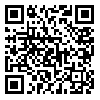Volume 19, Issue 75 (1-2020)
refahj 2020, 19(75): 283-319 |
Back to browse issues page
Download citation:
BibTeX | RIS | EndNote | Medlars | ProCite | Reference Manager | RefWorks
Send citation to:



BibTeX | RIS | EndNote | Medlars | ProCite | Reference Manager | RefWorks
Send citation to:
barzegar valikchali H, mohammadi A, esmaeili R. (2020). Explaining the Relationship Between Marginalization and Social Damage (Case Study: East of Mazandaran Province). refahj. 19(75), 283-319.
URL: http://refahj.uswr.ac.ir/article-1-3428-en.html
URL: http://refahj.uswr.ac.ir/article-1-3428-en.html
Abstract: (4887 Views)
Introduction: The problem of marginalization not only leads to the exteriorization of the city’s exterior but also has more irreparable consequences. Identifying the social impacts of marginalization is one of the most important urban issues to be taken into consideration. The purpose of this study was to investigate the relationship between marginalization and social damages in eastern part of Mazandaran province.
Method: The research method was quantitative, and a survey was used to collect data. The statistical population were the people living in the marginal areas of eastern Mazandaran province. From among them 384 people were selected as the sample using Lin’s table, and they were selected by simple cluster sampling method. The research tool was a researcher-made questionnaire that was analyzed using structural equation modeling and AMOS software.
Findings: The findings showed that marginalization affects the formation of social harm (tendency to violence 0.88, alcohol consumption 0.81, disobeying the law 0.89, insecurity 0.80, mental disorders 0.68, and social health disorder 0.90. There was a positive effect on addiction 0.79, distrust 0.73, social isolation 0.82, social alienation 0.67, economic poverty 0.84, deprivation 0.75, and structural equation results showed that GFI values for model 0.820 and The RMSEA value for the model is 0.029, indicating that the theoretical model is acceptable.
Discussion: In fact, the phenomenon of suburbia in Mazandaran is the result of social and structural problems, and it causes many social problems. Therefore, policymakers and authorities should pay more serious attention to planning and addressing the shortcomings of the marginalized areas.
Method: The research method was quantitative, and a survey was used to collect data. The statistical population were the people living in the marginal areas of eastern Mazandaran province. From among them 384 people were selected as the sample using Lin’s table, and they were selected by simple cluster sampling method. The research tool was a researcher-made questionnaire that was analyzed using structural equation modeling and AMOS software.
Findings: The findings showed that marginalization affects the formation of social harm (tendency to violence 0.88, alcohol consumption 0.81, disobeying the law 0.89, insecurity 0.80, mental disorders 0.68, and social health disorder 0.90. There was a positive effect on addiction 0.79, distrust 0.73, social isolation 0.82, social alienation 0.67, economic poverty 0.84, deprivation 0.75, and structural equation results showed that GFI values for model 0.820 and The RMSEA value for the model is 0.029, indicating that the theoretical model is acceptable.
Discussion: In fact, the phenomenon of suburbia in Mazandaran is the result of social and structural problems, and it causes many social problems. Therefore, policymakers and authorities should pay more serious attention to planning and addressing the shortcomings of the marginalized areas.
Type of Study: orginal |
Received: 2019/06/1 | Accepted: 2019/10/21 | Published: 2020/05/24
Received: 2019/06/1 | Accepted: 2019/10/21 | Published: 2020/05/24
Send email to the article author
| Rights and permissions | |
 |
This work is licensed under a Creative Commons Attribution-NonCommercial 4.0 International License. |







